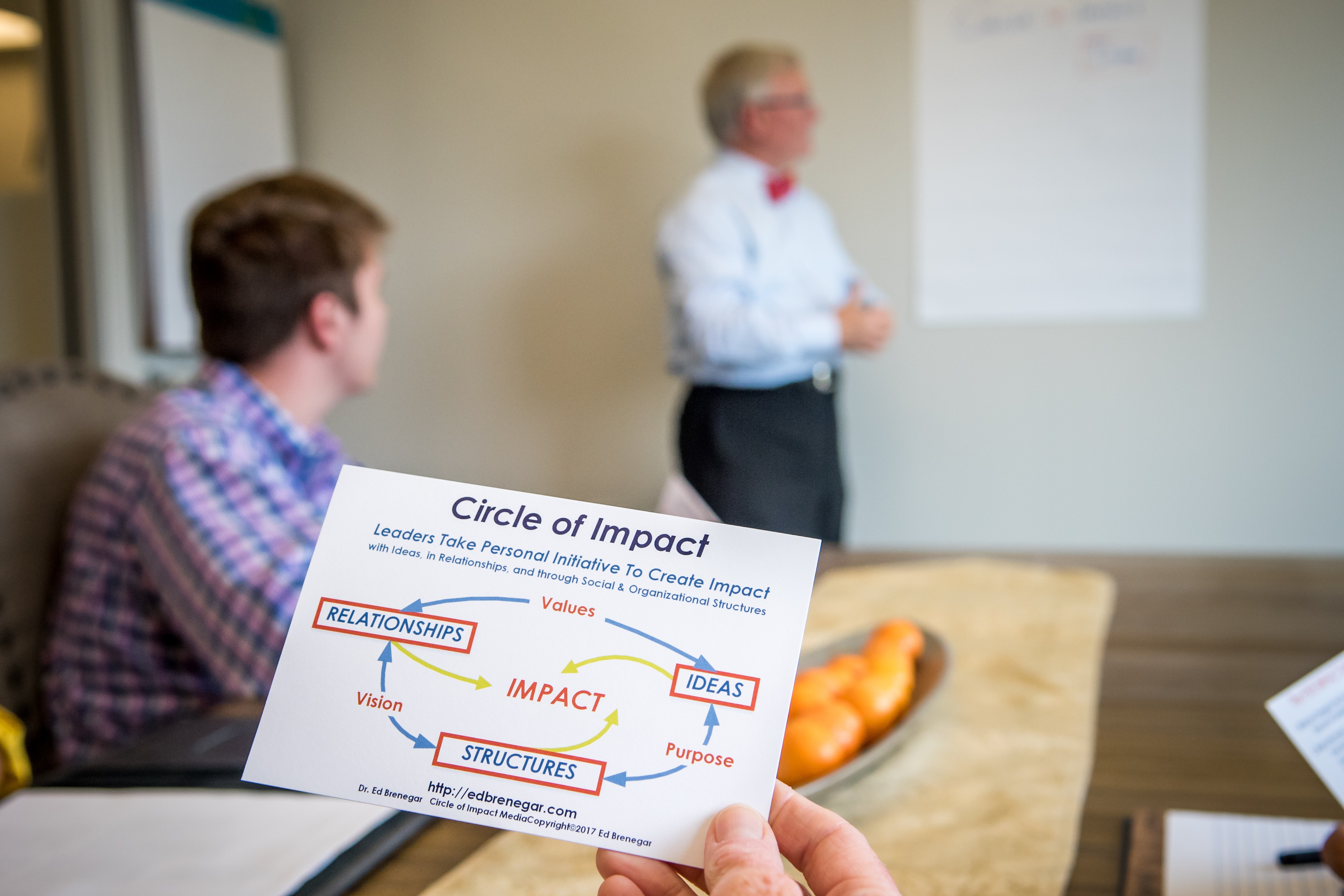


Two Global Forces of Change
We are living in a time of personal change. This transition is not only one that requires a response. More importantly, it demands decisions by each of us that lead to personal actions to create change. Simply being a follower is becoming less and less viable. We have to learn to “take personal initiative to create impact that makes a difference that matters.”
The implication of this new level of personal change means that the cultures and institutions that we have grown to depend upon for stability will also go through significant change. Many will fail from their inability to adapt. Others will survive but in a more marginal state. What is before is the creation of a new culture of leadership for organizations, communities and global society. In order for us to do this we must understand the forces of change that are at work.
This is the second of four posts of excerpts from my book, Circle of Impact: Taking Personal Initiative To Ignite Change. These posts are about the transition that I see taking place within organizations in particular, and global society in general. If you or your business is in transition, you may find that many of the ideas and tactics that you used to manage change are no longer effective. You need not only a different perspective, but new tools for living in the midst of a global transition of unprecedented proportions.

The Layers and Silos Problem
Power and control are established by how organizations are structured. Instead of borders, there are layers and silos to divide the territory of the organization.
The layers of an organization represent, in a very simple way, the difference between executives, managers and workers. The layer is designated by their titles and roles. It is out of this way of structuring an organization that we define leadership as a role or a title, rather than how people function within their lives and work. In doing so, we are admitting that structure is central to how we see ourselves.
Perpendicular to the layers of an organization are the silos of communication that define the social structure of accountability. Here the invisible boundaries of political power within the corporate structure are played out. The silo is how responsibility and accountability flows. Responsibility flows down and accountability rarely flows up.
An attempt to solve this problem was tried through flat structures. But corporate structures are not flat, cannot be flat and resist ever being flat. Power and authority are hierarchical in modern organizations and societies. Though most problems in corporations are caused by its structural, the solution is not.

The Power of Great Questions
What is the measure of a great question? First, it creates attention. Someone actually listens. Then maybe even thinks, rather than just reacts. Second, it changes the perception of what’s important. Two Important Skills In the past year, I’ve been...
Understanding Your Brand Experience
Recently I toured The World of Coca Cola in Atlanta. Since I rarely drink soft drinks, my interest was in their brand philosophy and marketing approach.
The Coca Cola Company is the master of product marketing. The tour celebrates the secret formula for Coke and the experience of sharing it with friends. There is a film at the beginning of the tour that associates warm, sentimental feelings with drinking and sharing a Coke. It is very effective.
Coke is selling a brand experience. The drink is associated with the experience. They want you to believe a serving of Coke is a vehicle for creating a happier, more peaceful world. Other beverage companies, like those who sell beer, market their products in a similar manner. It is about the experience of the drink, not the drink itself. It is a very clever, sophisticated approach that has made happiness synonymous with having a Coke with a friend.
As I walked through The World of Coke, I kept thinking about my brand in comparison to Coke’s. Like many people who speak, write, coach and consult, we also provide a brand experience. We have stories. We have brand colors that are intended to associate our brand with the experience of working with us. As I wandered through the exhibits, I wondered if I needed to change things. Later, I reviewed my brand design using the Circle of Impact model. Here’s what I learned.

The Real Obstacle To Vulnerability
Squeezed is the appropriate word. It is why people feel vulnerable, rather than them feeling the desire to be vulnerable.
This is vulnerability imposed from the outside, by the structures of the world and their companies.
The kind that Chris Lister writes about in his FastCompany article – I thought I knew what it meant to lead with vulnerability. Then I became CEO – is a choice that we make to be a particular way. Lister is correct. It isn’t as easy as Brene’ Brown suggests. Though I’m not sure Brene’ is saying it is easy but necessary.

